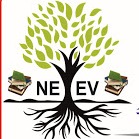Question 1 :
State TRUE or FALSE: Biomagnification, also known as bioamplification or biological magnification, is any concentration of a toxin, such as pesticides, in the tissues of tolerant organisms at successively higher levels in a food chain.
Question 2 :
We do not clean ponds or lakes, but an aquarium needs to be cleaned. Why?
Question 5 :
Which of the following are the problems caused by non biodegrdable wastes?
Question 7 :
What will happen if we kill all the organisms in one trophic level?
Question 10 :
Suggest one word for the statement/ definition: Organisms which depend on the producers either directly or
indirectly for food
Question 11 :
State True or False: All green plants and blue green algae are producers
Question 14 :
Accumulation of non-biodegradable pesticides in the food chain
in increasing amount at each higher trophic level is known as
Question 17 :
State True or False: Green plants get their food from organic compounds
Question 19 :
State TRUE or FALSE: Oxygen is sent through aerator in aquarium
Question 22 :
State TRUE or FALSE: The use of chemicals like CFCs has endangered the ozone layer.
Question 23 :
Suggest one word for the statement/ definition: Each level of food chain where transfer of energy takes place
Question 25 :
The percentage of solar radiation absorbed by all the green plants for the process of photosynthesis is about
Question 26 :
State TRUE or FALSE: Food chain is a series of organisms feeding on one another
Question 27 :
Which is the correct advantage of cloth bags over plastic bags during shopping?
Question 29 :
State TRUE or FALSE: Consumer in a food chain are living creatures that eat organisms from a different population.
Question 31 :
What is a harmful effect of agricultural practice on the
environment.
Question 33 :
Excessive exposure of humans to U V-rays results in
(i) damage to immune system
(ii) damage to lungs
(iii) skin cancer
(iv) peptic ulcers
Question 36 :
State TRUE or FALSE: Food chain is a linear network of links in a food web starting from producer organisms and ending at apex predator species, detritivores, or decomposer species.
Question 37 :
Organisms which obtain food from other living organisms are known as
Question 38 :
How many molecules of oxygen are required for formation of Ozone?
Question 39 :
<img style='object-fit:contain' src='https://teachmint.storage.googleapis.com/question_assets/cbse_ncert/61b19cff273b230584979b80.jpg' />
In the given figure the various trophic levels are shown in a pyramid. At which trophic level is maximum energy available?
Question 41 :
What will happen if deer is missing in the food chain given below?
Grass → Deer → Tiger
Question 42 :
Which of the following limits the number of trophic levels in a food chain?
Question 43 :
In the given food chain, suppose the amount of energy at fourth
trophic level is 5 kJ, what will be the energy available at the
producer level?
Grass → Grasshopper → Frog → Snake → Hawk
Question 44 :
How long are various non-biodegradable substances expected to last in our environment?
Question 45 :
The increase in the concentration of harmful chemical substances in the body of living organisms at each trophic level of a food chain is called
Question 47 :
State TRUE or FALSE: Is controlling air pollution a suitable mechanism for waste management in fertiliser industries.
Question 49 :
Suggest one word for the statement/ definition: The physical factors like temperature, rainfall, wind and soil
of an ecosystem
Question 50 :
Accumulation of chemicals at the successive trophic levels of food chain is called
























